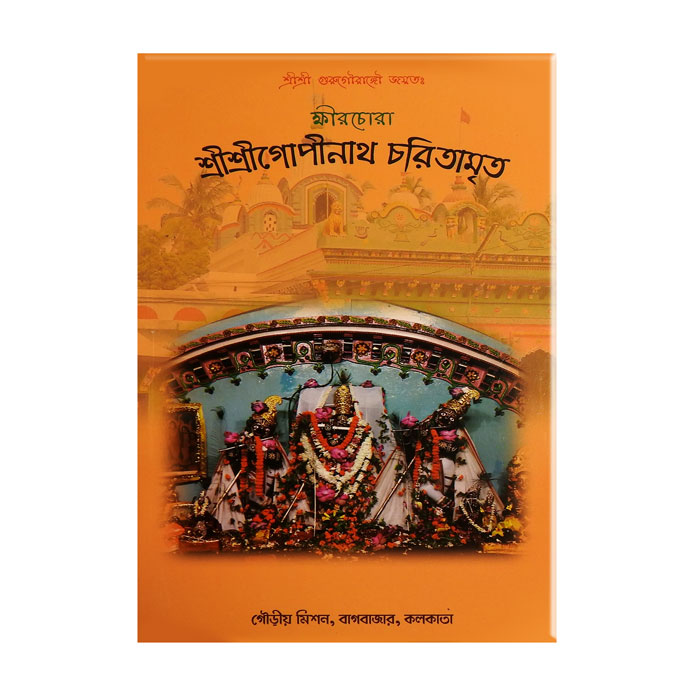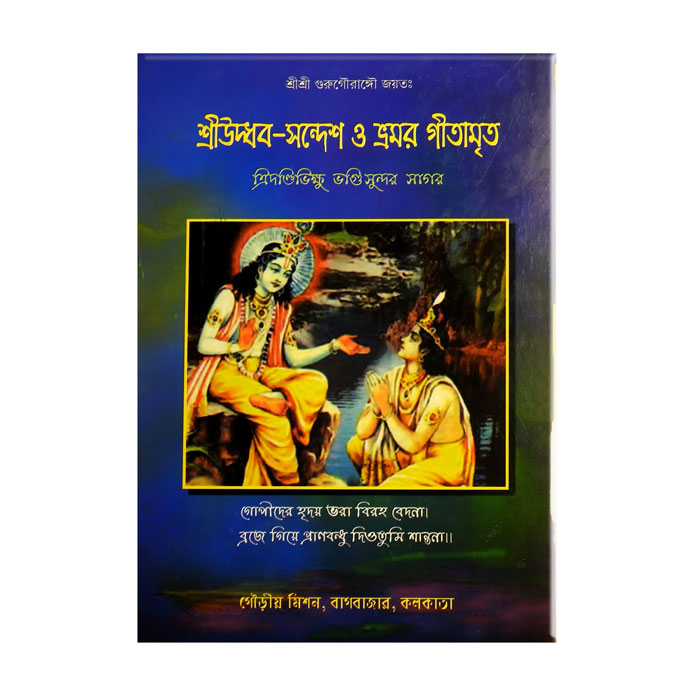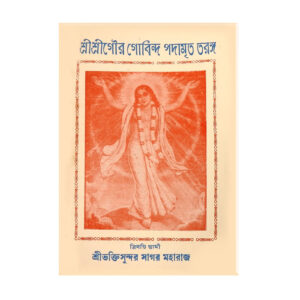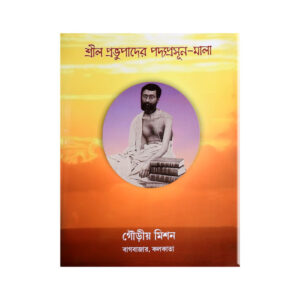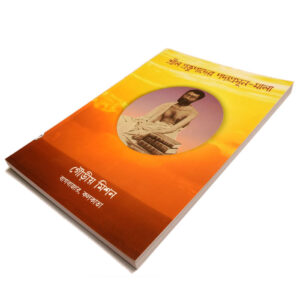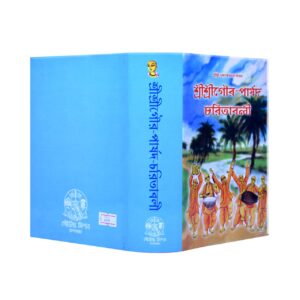Uddhav sandesh and bhramar geet শ্রী-উদ্ধব-সন্দেশ-ও-ভ্রমর-গীত
Original price was: ₹270.00.₹250.00Current price is: ₹250.00.
Uddhav sandesh and bhramar geet শ্রী-উদ্ধব-সন্দেশ-ও-ভ্রমর-গীত
In Shrimad Bhagwat, the incident of Lord Shri Krishna sending the message to Vrajanganas through his beloved friend Uddhava is very poignant. In this book, a very eloquent and literary interpretation of Uddhav-Sandesh was presented in the form of 32 topics like Shri Bhagwan’s sadness, significance of sending messenger, auspicious journey to Vraj, humbleness of Nandraj, heartache of Gopis, pain-filled Vrajvarta etc. Bhramargeet literally means “song of the bumblebee”. It is a six-legged black insect also called Bhramar. In Bhramargeet, the gopis liken Uddhava to a black whirlpool when he talks about the formless Brahman and yoga. The purpose of Bhramargeet is to refute knowledge and yoga and to establish Saguna Bhakti in place of Nirguna Bhakti.
“Uddhav Sandesh” and “Bhramar Geet” are significant parts of the Bhagavata Purana (Shrimad Bhagwat), a revered Hindu scripture. Here’s a breakdown of each:
- Uddhav Sandesh:
- This section narrates the poignant incident where Lord Krishna sends a message (sandesh) to the inhabitants of Vrindavan through his dear friend Uddhava.
- The book you mentioned likely provides an eloquent and literary interpretation of the Uddhav Sandesh, highlighting various aspects of the message and its significance.
- It may explore themes such as Krishna’s longing for his devotees, the importance of sending a messenger, the journey to Vrindavan, the emotions of the inhabitants of Vrindavan, and the deeper spiritual lessons conveyed through this exchange.
- Bhramar Geet:
- “Bhramar” refers to a bumblebee, and “Geet” means song. The Bhramar Geet is a poetic dialogue between the gopis (cowherd girls) of Vrindavan and Uddhava.
- In this dialogue, the gopis express their deep love and devotion for Lord Krishna, contrasting Uddhava’s knowledge-centered approach to spirituality with their pure, emotion-filled devotion.
- The purpose of Bhramar Geet is indeed to highlight the supremacy of Bhakti (devotion) over mere intellectual knowledge and yoga practices. The gopis emphasize the importance of devotion with form (Saguna Bhakti) over abstract, formless meditation (Nirguna Bhakti).
Both Uddhav Sandesh and Bhramar Geet hold profound philosophical and devotional significance within the Bhagavata Purana, showcasing the intimate relationship between the devotees and the Supreme Lord and illustrating the path of loving surrender as the highest form of spirituality.
Description
Uddhav sandesh and bhramar geet শ্রী-উদ্ধব-সন্দেশ-ও-ভ্রমর-গীত
In Shrimad Bhagwat, the incident of Lord Shri Krishna sending the message to Vrajanganas through his beloved friend Uddhava is very poignant. In this book, a very eloquent and literary interpretation of Uddhav-Sandesh was presented in the form of 32 topics like Shri Bhagwan’s sadness, significance of sending messenger, auspicious journey to Vraj, humbleness of Nandraj, heartache of Gopis, pain-filled Vrajvarta etc. Bhramargeet literally means “song of the bumblebee”. It is a six-legged black insect also called Bhramar. In Bhramargeet, the gopis liken Uddhava to a black whirlpool when he talks about the formless Brahman and yoga. The purpose of Bhramargeet is to refute knowledge and yoga and to establish Saguna Bhakti in place of Nirguna Bhakti.
“Uddhav Sandesh” and “Bhramar Geet” are significant parts of the Bhagavata Purana (Shrimad Bhagwat), a revered Hindu scripture. Here’s a breakdown of each:
- Uddhav Sandesh:
- This section narrates the poignant incident where Lord Krishna sends a message (sandesh) to the inhabitants of Vrindavan through his dear friend Uddhava.
- The book you mentioned likely provides an eloquent and literary interpretation of the Uddhav Sandesh, highlighting various aspects of the message and its significance.
- It may explore themes such as Krishna’s longing for his devotees, the importance of sending a messenger, the journey to Vrindavan, the emotions of the inhabitants of Vrindavan, and the deeper spiritual lessons conveyed through this exchange.
- Bhramar Geet:
- “Bhramar” refers to a bumblebee, and “Geet” means song. The Bhramar Geet is a poetic dialogue between the gopis (cowherd girls) of Vrindavan and Uddhava.
- In this dialogue, the gopis express their deep love and devotion for Lord Krishna, contrasting Uddhava’s knowledge-centered approach to spirituality with their pure, emotion-filled devotion.
- The purpose of Bhramar Geet is indeed to highlight the supremacy of Bhakti (devotion) over mere intellectual knowledge and yoga practices. The gopis emphasize the importance of devotion with form (Saguna Bhakti) over abstract, formless meditation (Nirguna Bhakti).
Both Uddhav Sandesh and Bhramar Geet hold profound philosophical and devotional significance within the Bhagavata Purana, showcasing the intimate relationship between the devotees and the Supreme Lord and illustrating the path of loving surrender as the highest form of spirituality.



